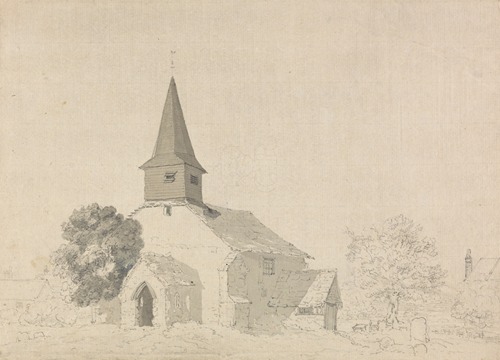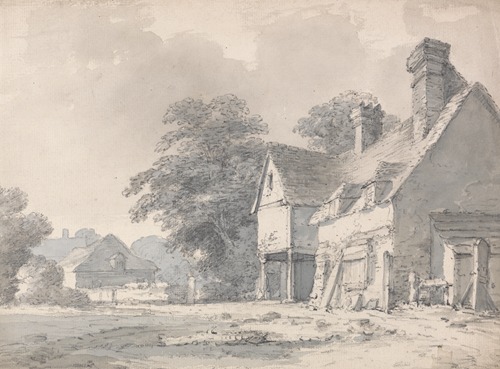


John Monro was son of Dr Thomas Monro (1759–1833), known for his informal 'Monro Academy' of drawing. Thomas had dutifully followed a career as a physician, but his real passion was art, and it was at his home at Adelphi Terrace on the banks of the Thames at Charing Cross that, from 1794, he would host young artists on winter Friday evenings, retaining their work and giving them three and sixpence and a supper of oysters. Many of these young students would become the leading artists of their day—including, most notably, J.M.W. Turner and John Girtin, along with John Linnell, John Sell Cotman, Peter de Wint, William Henry Hunt, Joshua Cristall and John Varley, among others.
Monro's house became a studio turning out sketches—often in blue-grey wash and monochrome—copied from drawings by more established artists, principally John Robert Cozens, William Alexander, Henry Edridge, Thomas Hearn and Monro's neighbour, John Henderson. Monro taught the young artists accuracy in drawing, accompanying them on outdoor sketching trips and teaching them to see from Nature, as well as giving them opportunity to share ideas with each other. As such, Thomas Monro played a key role in the development of the styles of the young artists—John Ruskin went so far as to say that Thomas Monro was 'Turner's true master'—and his 'academy' can be seen as a catalyst in the change of style in watercolours that took place around the beginning of the 19th century.
Three of Monro's sons were talented artists—Alexander Monro (1802–1844), John Monro (1801–1880), and Henry Monro (1791–1814).


